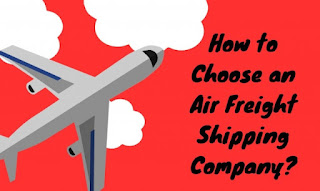The Evolution of Freight Forwarding: From Traditional to Digital
Introduction
Freight forwarding has a long history, traditionally relying on manual processes and extensive paperwork. However, with the advent of digital technologies, the industry is undergoing a significant transformation. For freight forwarding companies, understanding this evolution is crucial to staying competitive and meeting the demands of modern logistics. This article examines the journey from traditional to digital freight forwarding.
1. Traditional Freight Forwarding
In the past, freight forwarding was characterized by labor-intensive processes. Coordinating shipments involved numerous phone calls, faxes, and physical documents. Freight forwarding companies relied heavily on human expertise to manage logistics, from booking cargo space to handling customs clearance.
Challenges:
- Time-consuming processes: Manual handling of documents and communications led to delays.
- Limited visibility: Tracking shipments was difficult, resulting in a lack of real-time information.
- Higher error rates: Human errors in documentation and communication were common.
- Inefficiencies: Repeated data entry and redundant paperwork increased operational costs.
2. The Shift to Digital Freight Forwarding
The digital revolution is transforming how freight forwarding companies operate. The adoption of advanced technologies is streamlining processes, improving efficiency, and enhancing customer experiences.
Key Digital Innovations:
- Automation: Automated systems are replacing manual processes, reducing the need for repetitive tasks and minimizing errors.
- Real-time Tracking: Digital platforms provide real-time visibility into shipment status, enabling better tracking and monitoring.
- Electronic Documentation: Paperless documentation reduces processing times and storage needs, making it easier to manage and retrieve information.
- Data Analytics: Advanced analytics tools help in optimizing routes, forecasting demand, and improving decision-making.
- Blockchain Technology: Ensures transparency and security in the supply chain, reducing fraud and enhancing trust among stakeholders.
- Cloud Computing: Enables better data storage, accessibility, and collaboration across different regions and time zones.
3. Benefits of Digital Transformation
Freight forwarding companies that embrace digital transformation can reap numerous benefits:
- Increased Efficiency: Streamlined operations lead to faster processing times and lower operational costs.
- Enhanced Visibility: Real-time tracking provides customers with up-to-date information, improving satisfaction and trust.
- Improved Accuracy: Automation and electronic documentation reduce the risk of errors, ensuring smoother operations.
- Scalability: Digital solutions allow companies to scale their operations easily to meet growing demands.
- Sustainability: Digital processes reduce paper usage and enable more efficient route planning, contributing to environmental goals.
4. Challenges in Digital Adoption
Despite the clear advantages, transitioning to digital freight forwarding presents challenges:
- Initial Investment: Implementing digital solutions requires significant upfront investment.
- Training and Adaptation: Employees need to be trained to use new technologies effectively.
- Cybersecurity: Protecting digital systems from cyber threats is crucial.
- Integration: Ensuring seamless integration with existing systems and partners can be complex.
Conclusion
The evolution from traditional to digital freight forwarding is reshaping the logistics landscape. For freight forwarding companies, embracing digital technologies is now optional but essential for staying competitive. By leveraging digital innovations, companies can achieve greater efficiency, visibility, and customer satisfaction, positioning themselves for success in the future of logistics.

Comments
Post a Comment